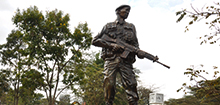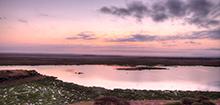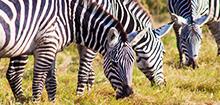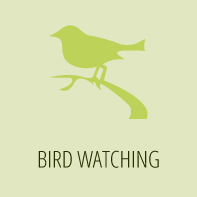
“Dramatic Valley of the Roan Antelope and Oribi”
A mosaic of landscapes, ranging from riverine woodland and rolling savannah to magnificent escarpments and towering cliffs, Ruma National Park promises undiscovered wildlife treasures and undisturbed peace. It is also Kenya’s last remaining sanctuary for the endangered roan antelope. Ruma lies on the flat floor of the seasonally watered Lambwe River Valley bordered by the Kanyamwa Escarpment to the South-East, and by the volcanic plugs of the Ruri Hills to the north. Ruma’s birdlife is exceptional. The park is also the only protected area in Kenya where the globally threatened blue swallow, a scarce intra-African migrant, is regularly recorded. Blue swallows, which depend upon moist grassland for both feeding and roosting, arrive in Kenya from their breeding grounds in Southern Tanzania around April and depart again in September.
Key features
Ruma National Park lies in Western Kenya, close to the shores of Lake Victoria. An island of wilderness in a sea of intense cultivation, the Park is situated in one of the most productive and populous regions in Kenya, and is one of the country’s more rewarding but less well known Parks.
A mosaic of landscapes, ranging from riverine woodland and rolling savannah to magnificent escarpments and towering cliffs, Ruma National Park promises undiscovered wildlife treasures and undisturbed peace. It is also Kenya’s last remaining sanctuary for the endangered roan antelope.
A vivid and Varied Landscape
Ruma lies on the flat floor of the seasonally watered Lambwe River Valley. Bordered by the Kanyamwa Escarpment to the South-East, and by the Volcanic plugs of the Ruri Hills, to the North, the Park is a long, narrow corridor of land contained on a fist-shaped peninsular extending into Lake Victoria. The terrain is mainly rolling grassland, with tracts of open woodland thickets. The soils are largely “black cotton” clay (Oxisols).
Protected Area Type
Park Size
Climate
Altitude
When to go
What to take with you
- Your food stuffs, drinking water and picnic items (and camping equipment if you intend to stay overnight).
- Also useful are: camera, binoculars, hat, sunscreen, sunglasses, insect repellent and guidebooks.
How to get there
- The main gate is 42km from Homa Bay. From Homa Bay take the main C20 tarmac road in the direction of Rongo. After 10km branch off to the right at Rodi Kopany and proceed 20km to Mirogi. At Mirogi follow the signs to the Park, entering at Kamato Main gate, a distance of 12km on a murram road from Mirogi
Attractions
The Last Refuge of the Roan Antelope
One of Africas’ rarest antelopes and the third largest of Kenya’s antelopes, the roan (or Korongo as it is known in Swahili) is a large, grey to rufous antelope with a distinctive black and white face, not unlike a tribal mask. Roans live in herds of upto 20 members, led by a bull.
The Oribi Antelope
The small and graceful oribi antelope (known as Taya in Swahili) has a conspicuous bare black glandular patch below the ears, a short black-tipped tail and black knee tufts. Living in strongly bonded pairs or small groups, oribi inhabit grassland and dense undergrowth.
Realm of rare birds
Ruma’s birdlife is exceptional. The park is also the only protected area in Kenya where the globally threatened blue swallow, a scarce intra-African migrant, is regularly recorded. Blue swallows, which depend upon moist grassland for both feeding and roosting, arrive in Kenya from their breeding grounds in Southern Tanzania around April and depart again in September.
Flourishing Wildlife
Ruma offers visitors an opportunity to see various wildlife species including the Rothschild’s giraffe, serval cat, hyena, impala, vervet monkey, roan antelope, oribi, bohor reedbuck, leopard, buffalo, and Jackson’s hartebeest. Recently introduced and re-introduced species are Black rhino,White rhino, Burchell′s zebra whose populations have adapted quite well. The roan antelope, Oribi and Jackson’s hartebeest are easily spotted in Ruma than anywhere else in Kenya.
Rich in Reptiles
Ruma has an exceptional snake population. Easily spotted species include: The African spitting cobra, forest cobra, python, eastern green mamba, black-mouthed mamba and puff adder. The park also abounds in lizard, skink and gecko.
Park Entry Fee
Ruma National Park | Citizen | Resident | Non-Resident | |||
Adults KSH | Child KSH | Adult KSH | Child KSH | Adult USD | Child USD | |
300 | 125 | 300 | 125 | 22 | 13 | |
* Kindly refer to the document KWS Conservation Fees document below for other services and charges
* Pay for your entry to any of our Parks or Reserves via Ecitizen government platform
* Create a personal account on the eCitizen Government platform by visiting https://kws.ecitizen.go.ke and make park payments in advance for a fast and convenient park entry.







